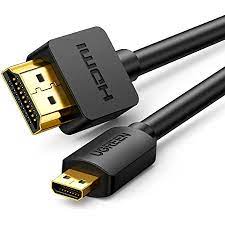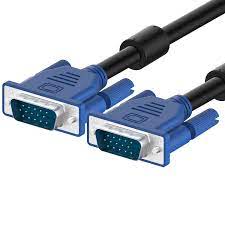Computer Monitor and It's Types
Monitor is an standard output device in computer system. The output device is a main part of the computer hardware, when the input we give to the computer through the input device, the result we get after processing the data is received by the output device itself. Thus, most of the output devices used by human beings include MONITOR , SPEAKER, HEADPHONE and PRINTER. We see the output on the computer monitor, listen to the songs through the speaker, print documents through the printer. The following are examples of some output devices:
A monitor is an electronic device that displays visual information from a computer. It typically consists of a screen, casing, circuit board, and power supply.
The way a monitor works is by receiving the video signal from the computer's graphics card and using a cathode ray tube (CRT), liquid crystal display (LCD), or light-emitting diode (LED) to display the image on the screen.
In the case of CRT monitors, the video signal is converted into an electron beam that scans across the screen and is deflected by magnetic coils to form a pattern of light and dark areas, which represent the image.

In LCD monitors, the video signal is used to control the illumination of tiny liquid crystal cells, which allow light to pass through or block it to create the image.
LED monitors are similar to LCD monitors but use LED backlighting instead of fluorescent lamps. This allows for slimmer designs, greater color accuracy, and better energy efficiency.
Types of Monitor
- Cathode-ray monitor
- LCD Monitor
- TFT Monitor
- LED Monitor
- IPS Monitor
- OLED Monitor
- plasms Monitor
- Touch Screen Monitor
LCD - Introduced in the 1970s, it was also used in LAPTOP due to its low energy consumption, small size and light weight.
LED - There is an electronic device that emits light, when the current flows, it produces light with the help of it. The display has three color emitters, these colors are optical colors, RGB - RED, GREEN and BLUE light, can also produce illumination.
TFT, LCD Display - (thin film transister) and AMLCD (Active Matrix liquid Crystal display) - ACTIVE MATRIX LCD WITH A LIQUID CRYSTAL DISPLAY (LCD), EACH PIXEL IS CONTROLLED BY ONE TO FOUR TRANSISTER which can make the screen bright and sharp bright deep. Because of this technology, Active Matrix Screens are often more expensive but have better quality than Passive Matrix Displays.
There are some key features of every display
- Resolution - The number of pixels contained on a display , expressed in terms of the number of pixels on the horizontal direction and the number of pixels on the vertical direction. Each pixel contain RGB(Red,Green,Blue) colors. Display resolution measured in pixels consider verticle direction pixels. More resolution is useful for who are working with multiple applications. for example - 800x600, 1280x720, 1366x766, 1920x1080
- Aspect Ratio - Aspect Ratio is Ratio of horizontal and vertical length of display. Aspect Ratio decide screen wide with respect to height. some Aspect ratio is 16:9, 4:3 etc.
- Contrast Ratio - Contrast Ratio is ratio of how much display produce white depth color and black depth color. Contrast Ratio higher means more clear visibility.
- Brightness - Brightness is light intensity produced by a screen which is average of Red light, Green light and Blue light emitted from display. More Brightness is display consuming more power.
- Connecting ports - It is basic display property that is used to connect with computer or other devices that can be Monitored. HDMI , VGA, DVI, Thunderbolt etc these are examples of display ports.
How to connect Monitor with Laptop or desktop using different ports
Here is the some popular display connectors for connecting with laptop or desktop computers.
- VGA
- HDMI
- Thunderbolt
- DVI
- Display port
- USB-C


